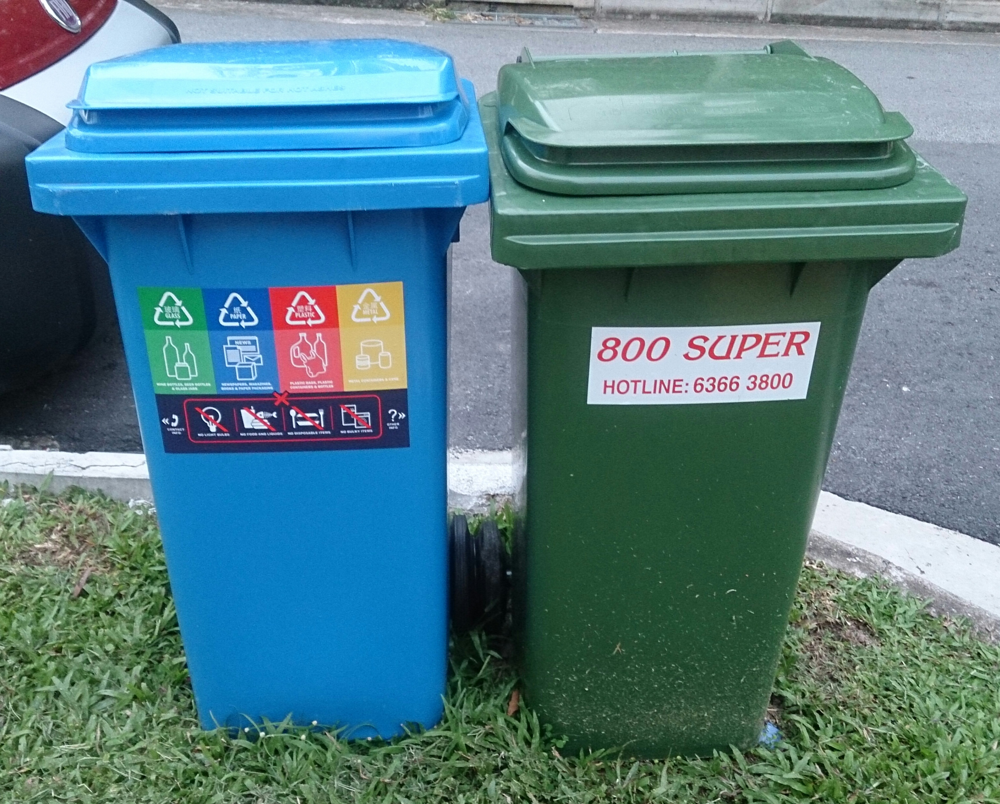
Blue (recyclables) and green (trash) recycling bins simplify the separation of waste. Household waste reduction is a critical component of sustainable living. The average American generates approximately 4.4 pounds of trash per day
CITIBIN.COM
Yearly, the amount of waste surpasses 1,500 pounds, which means our disposals can make a tangible difference in saving the environment. By maximizing recycling, composting food waste, and reducing single-use plastic consumption, individuals are able to curtail their trash footprint while they also cut the cost of garbage management supplies. Below are real-world approaches to help families maximize garbage reduction as well as recycling materials away from landfills.
Reuse, Repurpose, and Recycle
Think before you discard: Before discarding anything, question yourself whether it can be recycled or reused. Everything (containers, jars, old clothes) can be given a second life at home or donated instead of being discarded. For example, sell or give away usable products like clothing, furniture, and electronics instead of disposing of them – this saves products and waste from going into landfills
EPA.GOV
.
Recycle appropriately: Set up individual containers for recyclables and learn about your local recycling rules. Recycling is great for the community and nature, but only when we do it appropriately
EPA.GOV
. Empty containers and recycle only what your local program accepts (e.g., certain plastics, paper, metal, glass). When in doubt, “know before you throw” – check the symbol/number on plastics and local guidelines to avoid contaminating the recycle stream
EPA.GOV
.
Buy recycled products: Help close the recycling loop by purchasing items that have recycled content (paper towels, toilet paper, etc.). Buy also products with minimal packaging. By purchasing items with recyclable or no packaging, you reduce waste in the first place
CITIBIN.COM
Personal shopping bags and purchases in bulk or through the use of refill containers also minimize packaging wastes.
EPA.GOV
.
Start Composting Organic Waste
Compost kitchen waste: A lot of household trash is organic waste like food peels, leftovers, and yard trimmings. Instead of dumping these in the dump (where they form methane), compost them at home. Composting turns fruit/veggie scraps, coffee grounds, eggshells, and leaves into nutrient-rich garden fertilizer. It also increases water retention in soil, decreases erosion, and keeps organic waste out of landfills
EPA.GOV
. Start a low-maintenance backyard compost pile or use a compost bin – mix brown material (dry leaves, paper) into green material (kitchen garbage) and ensure that it’s aerated. In a while, you can have free compost to use as fertilizer for your plants.
Try vermicomposting: Without outdoor space, attempt indoor worm composting. A worm bin is an odor-free method of letting red wiggler worms consume your kitchen scraps and produce compost (worm castings) that’s perfect for houseplants.
Use compost, not garbage disposal: Instead of sending food scraps down the drain (where they gum up sewer systems), compost them. You’ll reduce garbage space and return nutrients to the soil. In certain cities, food scraps are collected separately – see if there is a community composting program or curbside collection in your area.
Minimize Single-Use Plastics
Cut down on plastic packaging: Plastic wraps, bags, and bottles constitute a significant portion of domestic trash. Minimize this waste by buying products with little or no plastic packaging.
EPA.GOV
. For example, buy in bulk (in your own containers) for dry goods, or go for concentrates/refills on cleaners and soaps. Bring cloth bags for all shopping (not just groceries) and use reusable bags for produce instead of the plastic ones the store offers. These small steps can really cut down on the pile of plastic packaging you bring home.
Replace disposables with reusables: Transition to durable, reusable versions of daily disposable items. Use reusable grocery bags, water bottles, and coffee cups instead of single-use plastics
EPA.GOV
. Carry a metal or bamboo set of utensils to forego plastic cutlery when eating at restaurants. Utilize washable cloth napkins and towels in place of paper towels. These replacements are cost-saving over time and prevent a lot of waste.
Strive to completely stop using single-use plastics wherever you can: Attempt to cut out things such as plastic straws, single-use cutlery and plates, and take-away containers. If you must have straws or easy utensils, utilize reusable or compostable ones. For food storage, utilize glass jars or reusable silicone pouches rather than disposable plastic bags and wraps.
Recycle plastics appropriately: If you do use plastics, recycle whenever possible. Check for the recycling symbol and number on items – many plastic bottles, jugs, and containers are recyclable. Certain items like plastic bags, wrap, and foam cannot be put in curbside bins but can be brought to special drop-off centers. Recycle only what is actually recyclable – if in doubt, it’s better to leave something out than to contaminate the recyclables
EPA.GOV
.
By doing these tips – using more again, recycling wisely, composting organics, and reducing disposable plastics – you will reduce your household trash considerably. Less trash sent out means fewer trips to the landfill, lower trash bills, and a cleaner environment. Simple steps such as taking your own bags or initiating a compost bin can make a difference in the long run, reducing your garbage output and saving resources for a cleaner home.